Here is the essay I referenced in my previous post. I think it serves as a nice starting point to what I hope to accomplish with this study.
The Prado Epiphany Triptych of Hieronymus Bosch
The Prado Epiphany (interior), Hieronymus Bosch, c. 1500.
Oil on panel. Museo del Prado, Madrid.
Interpretations of the work of the great and enigmatic late 15th century Netherlandish painter known as Hieronymus Bosch are both various and dubious. Bosch has been dismissed as a mere faiseur de diables (maker of devils), condemned as an atheist as early as the 16th century, described as a heretic of multiple sorts, and anachronistically considered as one would a surrealist of the 20th century. As intriguing, and entertaining, as some of these interpretations might be, the visual language of Hieronymus Bosch must first and foremost be considered through the lens of the society that produced him.
It is easy to understand the many points of view taken on the works of Bosch, if not necessarily forgive the certitude with which some of these subjective and largely untenable interpretations are presented. Bosch’s works are steeped in the mysterious. They seem like rebus puzzles that demand a viewer to piece together a series of pictograms into a unified answer. That there are so many individualized schools of thought regarding his work in itself attests to the great success of Hieronymus Bosch in his milieu. The surviving paintings (and we can easily imagine those that have been lost) of Bosch exclusively depict orthodox, Christian devotional images. This is the visualization of the mystical, crafted in order to enable the viewer’s contemplation of a supernatural reality invisibly suffusing the mundane, a world laden with symbols speaking of God’s Creation, the Fall of Man, and Salvation through Christ. The enigma in Bosch’s art might be viewed as part of the process. How better to enter a state of religious discovery than from a position of questioning wonderment? Bosch forces the viewer to think about what they are seeing, and about subjects that are anything but simple. While whomever might have commissioned works from Bosch would have had a great deal to say in what the artist depicted, it is hard to imagine anyone other than the artist himself calculating the myriad of symbolic riddles each of his works incorporates.
Bosch is famous for his grand tableaus, the Millennial Triptych/Garden of Earthly Delights, the Temptation of Saint Anthony Triptych, the Vienna Last Judgment, and the Haywain. While lacking the teeming crowds of symbolically invested figures of these works, the Epiphany Triptych held at the Prado is in itself a highly complex work of art whose full consideration is well beyond the scope of this paper. Even the central panel alone, the Epiphany itself, contains a level of information nearly impossible to deal with completely, and for certain not conclusively. Bosch was not an Albrecht Dürer or a Leonardo da Vinci, leaving behind stores of letters, notebooks and other documentation to be considered and directed towards interpretation of his works. The mind of Hieronymus Bosch is and will remain a sealed mechanism whose inner workings can only be supposed and guessed at.
Shockingly little is known about his life. His date of birth is estimated, his travels, if any, unknown, the functioning of his workshop speculative, and the sequencing of his paintings assumed. Even the identities of his patrons are open to debate. What is known of Bosch’s life comes through the records of the llustre Lieve Vrouwe Broederschap, the Illustrious Brotherhood of Our Blessed Lady, a devotional fraternity associated with the Cathedral of St. John in ‘s-Hertogenbosch, Bosch’s hometown and namesake. The central role of this organization in the life of Bosch and his family in itself makes strong testament to the sincere and orthodox faith expressed by his paintings. The activities of the Illustrious Brotherhood of Our Blessed Lady reportedly revolved around a miracle-working image of the Virgin Mary that was housed in the cathedral, which elucidates Bosch’s depiction of the Virgin in the Epiphany Triptych to some degree.
Rolin Madonna, Jan van Eyck, c. 1435.
Oil on panel. Musée du Louvre, Paris.
Undoubtedly Bosch drew from the model of the Virgin as depicted by Jan van Eyck in the Rolin Madonna, which predates the Bosch work by approximately 60 years. Both artists featured the Virgin and Child as the Throne of Wisdom. In addition, Bosch’s Virgin is at a hierarchically massive scale when compared to the figures around her. Her stillness, her block-like format, and the reverence of the Magi and their company’s approach come together in suggesting the presence of miraculous statuary like that said to have been held at the Cathedral of St. John. And while the Madonna clearly draws upon van Eyck’s archetypical rendering, Bosch’s image of the Christ Child itself appears rather doll-like, as more than one commentator has noted.
This mannequin-Christ might also stem from a ready source of inspiration for Bosch’s depiction of the Epiphany, a common theme in Netherlandish art of this era. From the beginning of the 15th century ‘s-Hertogenbosch was renowned for housing several institutions known as Chambers of Rhetoric, amateur dramatic societies. Mystery plays, enactments of Biblical stories, would certainly have been familiar to any resident of the city. Even more to the matter, the Illustrious Brotherhood of the Blessed Virgin itself performed dramatic presentations, with the Epiphany being a popular subject, not much different from any contemporary church’s Christmas pageant. In that scenario a doll standing in for Christ certainly makes sense. This might also explain the flat, backdrop, set-like appearance of the stable. While some might assume these visual details represent depictive shortcomings of Bosch, a quick examination of his body of work, or even of other areas of the painting itself, disproves this contention. Further, many of these features can be seen in Bosch’s unquestionably earlier Philadelphia Epiphany.
Philadelphia Epiphany, Hieronymus Bosch, c. 1493 or later.
Oil on panel. Philadelphia Museum of Art.
Might what some contend is a young Bosch’s difficulty in depicting perspective in actuality be his rendering of a simple stage set? It might b the case if, as some have suggested, the middle king is intended as a self-portrait of Bosch performing in one of these productions. At any rate we can see here how much of the later Epiphany composition has been worked out at this stage, and note how much of the Prado example’s intrigue is not yet present. It must be noted that many of the compositional elements utilized by Bosch were drawn from Dutch manuscript illustrations, which played a major role in the artist’s stylistic development, along with the influence of Flemish masters like van Eyck, as well as Robert Campin and Rogier van der Weyden.
As noted at the onset, intriguing details abound in the Prado Epiphany. Predominantly this is an image about the salvation of man through Christ. The golden gift on the ground is formed as a statuette depicting Abraham’s sacrifce of Isaac, considered an Old Testament precursor to the Crucifixion. Other details in the costuming of the Magi show scenes of Sheba before Solomon and Abner before David, both of which were Old Testament stories symbolically associated with the Magi visiting the newly born Christ child.
Bosch also makes the salvation theme clear through repeated and overt reference to the Eucharist. Most apparently, the closed outer panels of the triptych features a grisaille rendition of the legendary Mass of St. Gregory, in which the Eucharistic bread manifested as Christ’s actual flesh in response to a woman who could not accept the notion of transubstantiation as she had personally baked the bread. Notice how Bosch echoes the position of St. Gregory to that of Melchior, the kneeling Magi, in the interior.
The Mass of St. Gregory (Prado Epiphany exterior)
Hieronymus Bosch, c. 1500.
Oil on panel. Museo del Prado, Madrid.\
Note as well how Melchior’s line of site to Christ is intersected by the presentation of Balthasar’s gift of frankensense, which looks like broken up Eucharistic bread on a paten in his depiction.
Another major motiff which attests to Bosch and his patrons’ orthodox Christian point of view is his use of the Parable of the Good Shepherd, wherein Christ stated, “He that entereth not by the door of the sheepfold, but climbeth up another way, the same is a thief or a robber…But he that entereth in by the door is the shepherd of the sheep”. The parable is visually depicted by the figures climbing over the stable roof, and its use here furthers the general theme of the Epiphany of accenptance or rejection of Christ’s divinity by gentiles and jews. This is also a key component of one of the central panel’s most compelling and contoroversial elements, the startling and many say sinister-seeming figure looking on from within the doorway.
He is the focal point of the image, a suggested diagonal from the crown on the ground and up the two rightmost Magi leads the viewer’s eye to him and he is on level with the closer figures of the Virgin and Caspar. He is also framed by the darkened doorway, and conspicuously naked. Clearly he is the figure most enlivened and emotive while the foremost cast is predominantly solemn and still. Who he is and why Bosch included him in the image is the great mystery of the painting. He has been called a Fourth King, the Antichrist, a second and even third Christ, and Adam looking upon the ultimate redemption of Original Sin as he was foretold. Much more likely is the Charles Scillia/Walter Gibson argument that this is the pagan sorcerer Baalam, a Biblical prophet from the era of Moses. This is an obscure individual in the modern era, but far less so in 15th century ‘s-Hertogenbosch to devote Christians like Hieronymus Bosch and other members of the Illustrious Brotherhood of Our Blessed Lady. Numerous elements support this concept. The central theme of the panel deals with acceptance of Christ as Savior, and while Baalam was seen as a precursor to the three Magi, he must also be noted for attempting to lead the Israelites into idolatry despite foreseeing the Messianic coming. Many have wondered at the leprous-looking wound encased in a reliquary on the figure’s extended leg. This might in part be a reference to a wound that made Balaam lame in one leg. Balaam’s Old Testament legend involves a talking ass, and it is interesting to see that while Bosch has included the ass standard from Adoration images in this version of the Epiphany, he has chosen to exclude the ox that usually accompanies it. If this figure is Baalam, then he likely is meant to serve as a contrast to the Magi, the pagan who fails to accept Christ compared to those who do.
Hieronymus Bosch possessed a unique artistic vision that was inarguably the product of his environment. As is readily evident through regarding his surviving body of work, of foremost importance to Bosch was the devout worship of Christ as performed through a profound level of contemplation of a vast body of material, Biblical and apocryphal, exoteric and esoteric. This sea of information was woven by the artist into highly complex systems of interrelated symbols for the purpose of edification on matters he believed to be supernatural beyond mortal conception and yet simultaneously infused in every aspect of life, at every level of experience. It is likely that not even the intricate imagination of Hieronymus Bosch could imagine the levels of intrigue his evocative imagery and narratives produce in viewers to this day.
I thought I would also include a timeline I put together last Spring for a graphic publication and design course. My original plan was to include quite a few more artists and span from the late Gothic through to the end of the Baroque, but I had to scale back for the sake of my own sanity. As it was I spent several sleepless nights working on this.
My intent with the timeline was to graphically show the concurrence of the Renaissance in Italy and Northern Europe. For example, and pertinent to this blog, Bosch and da Vinci are very much contemporaries, though I don't think this seems apparent unless it is pointed out. It is of course necessary and logical to separate the Italian and the Northern Renaissance for many reasons, but doing so makes it easy to lose scope of the full movement and the interrelationships. I have this posted about as big as I can get away with. To really appreciate it it should be big. I'd like to have it printed at poster size someday.

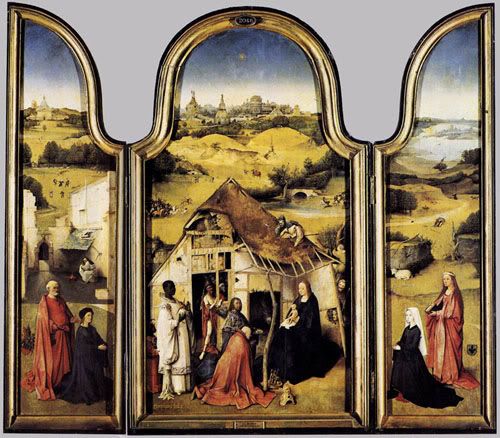
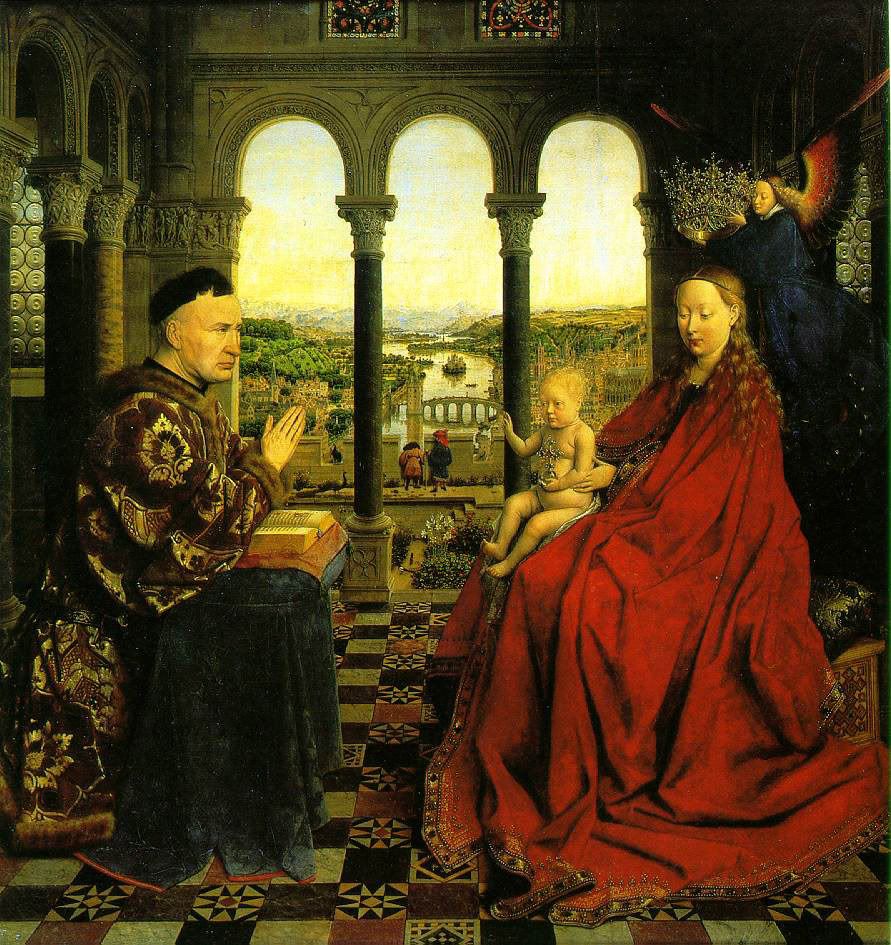
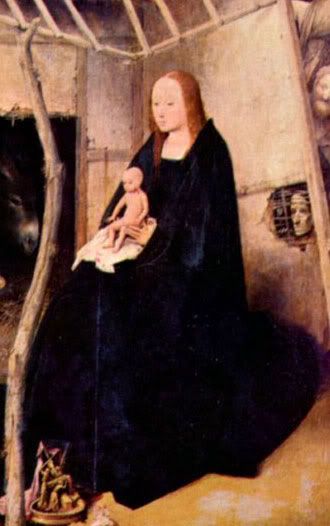
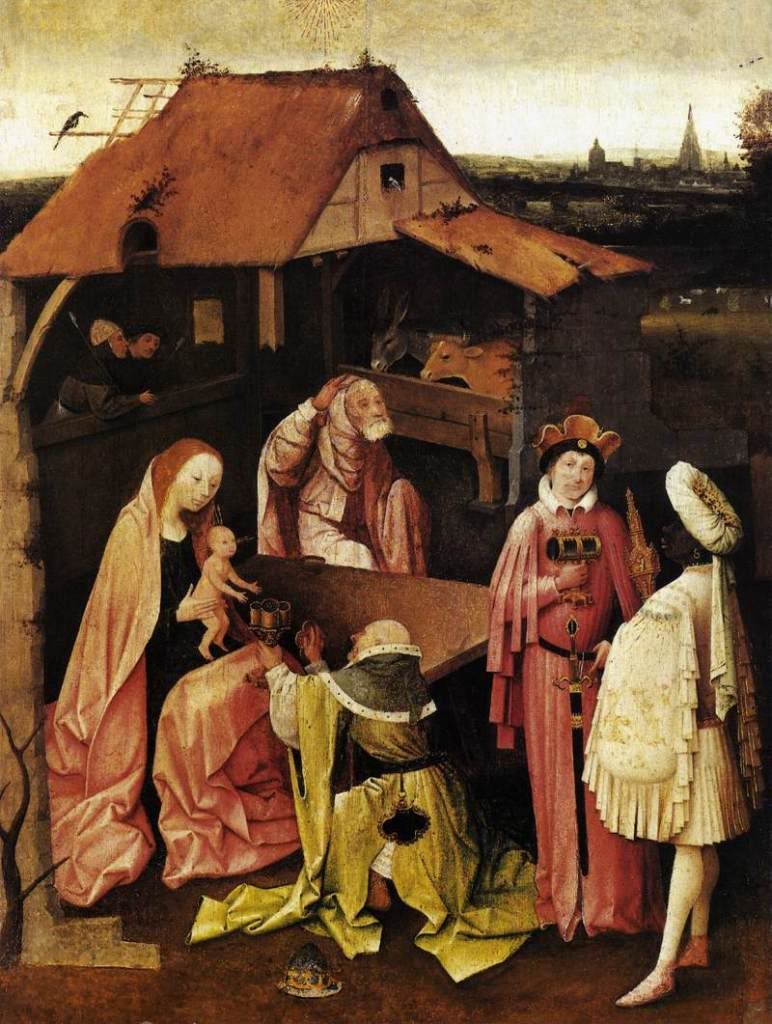
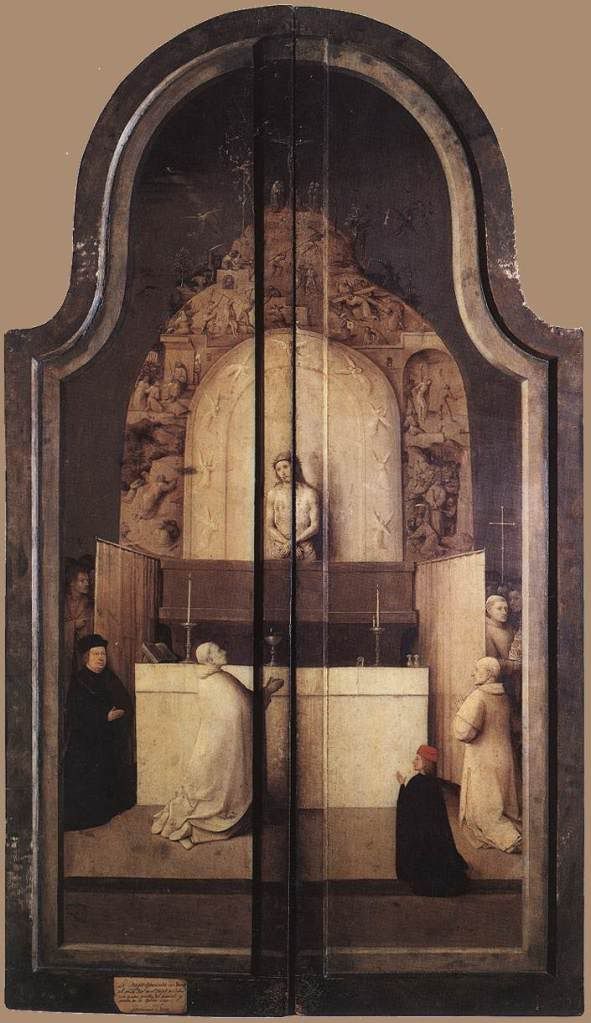
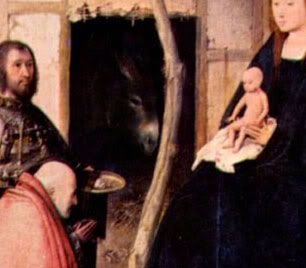
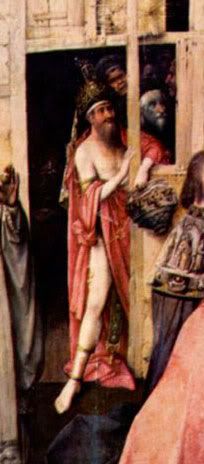

No comments:
Post a Comment